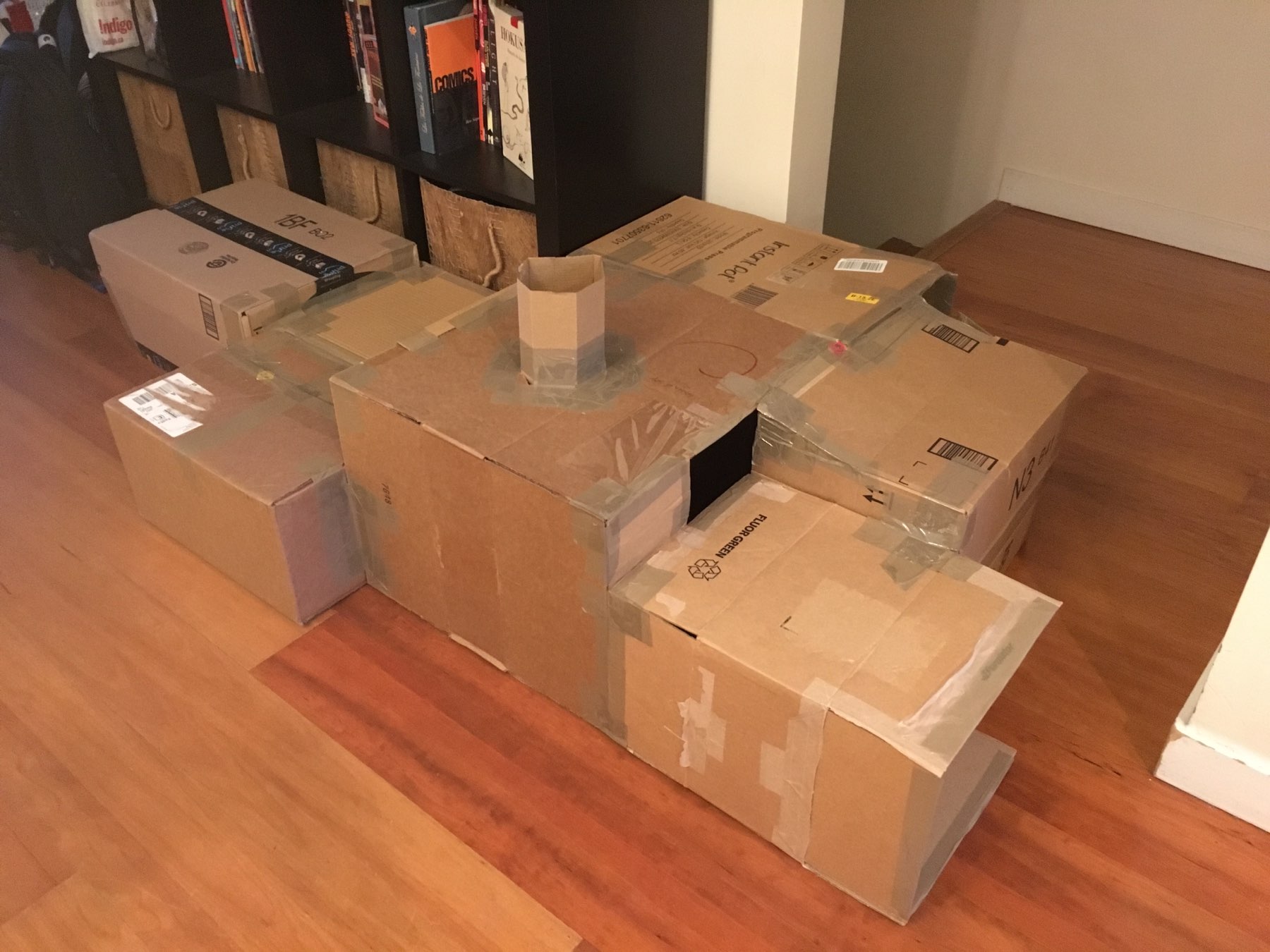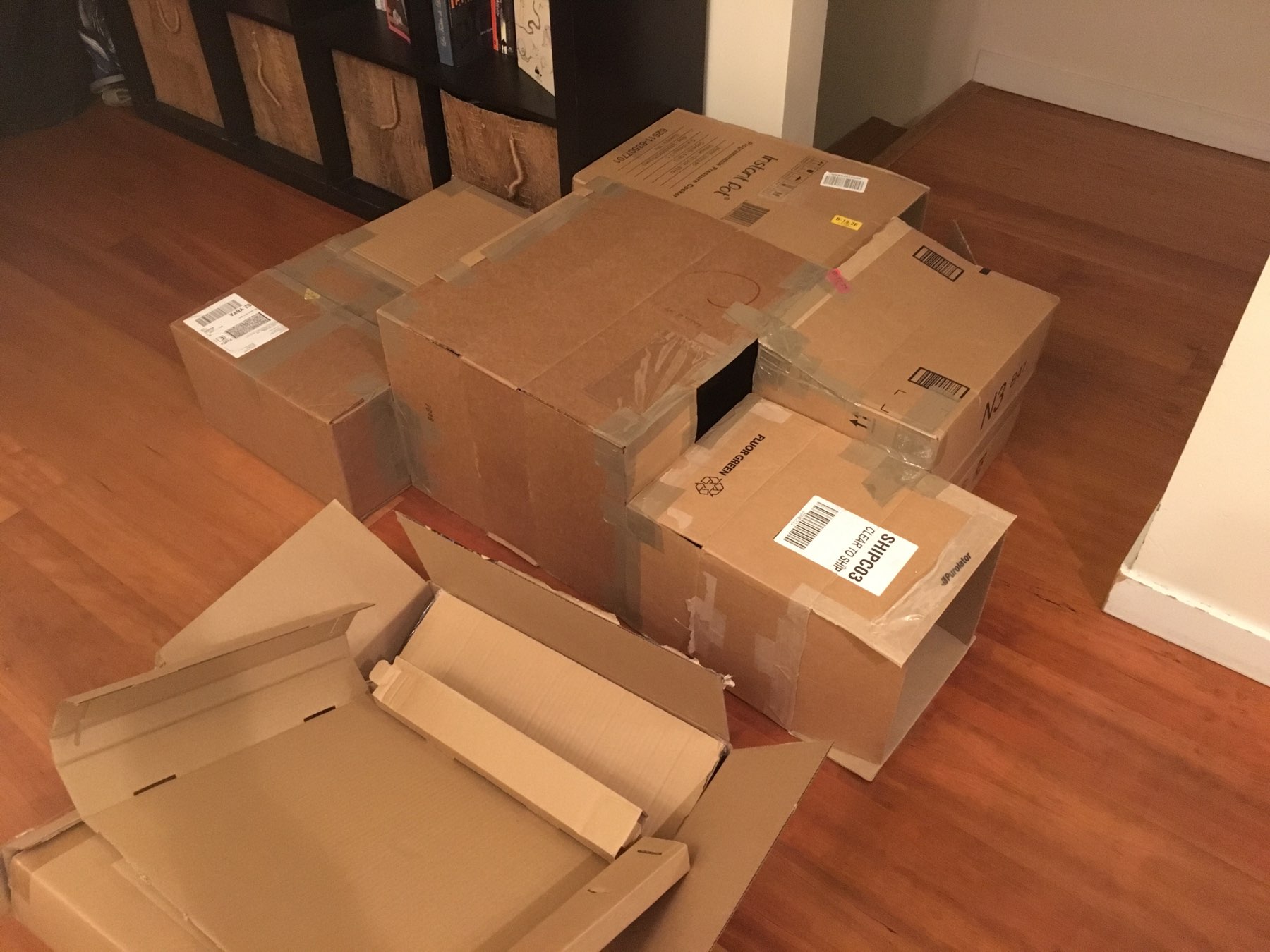A Crap Guide to D&D (5th Edition) https://www.youtube.com/
The Stochastic Game
Lovecraftian horror movie by Hardware’s director, starring Nicolas Cage? I’m, uh, both intrigued and horrified https://bloody-disgusting.com/movie/3536502/nicolas-cage-topline-richard-stanleys-colour-space/
The nightmare horrorshow that is the Apple TV remote
A rant on Ars Technica:
I wanted to love the Apple TV remote. It was sleek and futuristic. Plus, it
had an accelerometer and its own little trackpad. Besides which, I didn’t
think I’d really need the remote, anyway, since I could simply tell the TV
what I wanted to watch. What wasn’t to love? Turns out, pretty much
everything.
I largely agree. After Apple added 3rd party app support on the Apple TV, I
considered it for a bit (I don’t care about the iTunes eco-system, I’m mostly a
Plex + Netflix kind of guy, but I’m interested in getting AirPlay/mirroring
working between my iPad and the TV). However, after test-driving the new remote
and asking friends about it, I realized I didn’t like it at all. It really felt
like one of those times where Apple designers care more about how it looks that
how it gets used. The Roku remotes are not perfect but immensely better as far
as I’m concerned.
This is super cool: test driving over 50 programming fonts in your browser https://app.programmingfonts.org/
I feel like this guy is opening Pandora’s box, here. Plus, this page makes my
laptop CPU go crazy. But it’s fun!
matthewrayfield.com/articles/animating-urls-with-javascript-and-emojis/
Highlander Reboot Update
Some updates to the Highlander reboot have surfaced on io9 via Collider
and, as a fan of the original movie1 and TV series, I’m carefully excited:
Anyone who knows anything about the property knows it has a lot of meat to it.
It’s a good property. It’s got a lot of potential. We’re just trying to figure
out the best way not to fuck it up.
I do indeed hope they don’t fuck it up. Of course, they need good historical
flashbacks and proper sword-fight choreography and over-the-top music2 and
all that, but there’s more to it.
To me, the key element of the Highlander franchise is that it’s a mix between
vampires and battle royale:
-
From vampires it obviously takes the whole immortality thing, but it removes
the almost obligatory “vampirism as sexual intercourse/harassement”
sub-text. Immortals in Highlanders can represent whatever theme or metaphor
you want, and from that angle they might be more similar to X-Men or
something. It’s especially interesting given the fact that, in Highlander’s
case, you can look at societal changes through the lens of century-spanning
history. -
From battle royale it takes the “there can be only one” goal, and turns it
into a catchy slogan, even. But since the game is played over the course of
centuries or more, there’s a lot more politics than pure combat and violence
– another thing you often find in vampire stories too, by the way. It means
that all the interesting themes of friendship and betrayal that are touched
upon in Battle Royale or Hunger Games can be explored deeper here.
This is all a lot more conductive to a TV series than a bunch of movies in my
opinion, so my guess is that it’s the form it will eventually take.
-
THERE’S ONLY ONE MOVIE LA LA LA LA I CAN’T HEAR YOU LA LA LA ↩︎
-
I might not forgive them if they don’t use “Princes of the Universe”
somewhere in there. I don’t want to hear anything about Queen’s soundtrack
being cheesy or whatever, you’re just wrong, it’s totally awesome. My only
regret is the omission of their “New York, New York” cover from the original
movie soundtrack. ↩︎
First ski of the season!



The cat went outside so we managed to finish this year’s Christmas Cat Playground! Only a ground level this time (it wasn’t very conclusive last year) but note the kids’ new idea of a chimney to insert toys!

I’m not done with this year’s Christmas Cat Playground yet but Lestat has already entered it and I’ve been waiting a long time to resume construction 😅

Vim and Mercurial
Edit: since the original publication, I added a paragraph on vim-signify and
a few other little tips based on some #mercurial IRC feedback.
I already mentioned Vimways’ advent blogging about Vim, but here’s some
more commentary on one of their entry, namely the Vim and Git one. It was
quite good so I figured I would write a “Vim and Mercurial” one!
Since Samuel (the original post’s author) did a good job with the overall
article structure, I’m going to totally plagiarize it.
The Mercurial perspective
Just like Git, Mercurial needs to open a text editor for some operations:
- editing commit messages.
- editing history (the “interactive” half of what Git calls “interactive
rebasing”).
Mercurial also needs to open some kind of tool (not necessarily a text editor…
but you can guess which tool we’ll use!) for some other operations:
- showing a diff.
- resolving a merge.
Editing commit messages
Just like Git and pretty much every other tool in existence, Mercurial checks
the $EDITOR environment variable to know what text editor to use. And just
like Git, it also offers a configuration setting for when it’s easier to set it
this way:
[ui]
editor = vim
If you have both $EDITOR and ui.editor set, Mercurial favours ui.editor.
Once you’ve run hg commit and Vim opens, you can type your commit message as
usual. If you change your mind, you can do :cq and exit Vim with a non-zero
exit code, which Mercurial will detect and abort the commit. Otherwise, :wq
will exit normally and Mercurial will proceed.
Editing history
Where Git has git rebase --interactive to do both rebasing and history
editing, Mercurial has two different operations: hg rebase to rebase, and hg histedit to edit history. Rebasing doesn’t require the involvement of a text
editor, but history editing does.
First, Mercurial doesn’t let you edit history by default. It wants you to
consciously opt-in to this type of tricky command, by enabling the extension it
comes in:
[extensions]
histedit =
Once that’s done, you’ll get the hg histedit command, which as usual reads the
$EDITOR environment variable and the ui.editor configuration setting. The
text buffer that will open in Vim will look very similar to the one from Git’s
interactive rebase, so just use ciw, dd, and p or P.
Showing a diff
Using hg diff prints out a diff in the terminal. To use an external tool,
you’ll need to enable another extension (yes, Mercurial is big on forcing you
to enable extensions, sadly):
[extensions]
extdiff =
Then you can configure one or more “external diff tools” for Mercurial to use,
like, for instance:
[extdiff]
cmd.vimdiff = vimdiff
You can then run hg vimdiff ... and it will open Vim in diff mode over the
changed file. Sadly, it only works fine for cases where you’re only diffing
a single file. If you pass a revision that touched multiple files, the extdiff
extension will copy the previous/next versions of those files into a pair of
temporary directories, and pass those to Vim. Vim doesn’t have anything to
handle directory diffing out of the box.
The standard solution for this is to install the DirDiff Vim plugin, which
does exactly what the title implies. Its only drawback is that it’s not very
friendly to non-traditional Unix setups – Windows, or using Fish as your shell,
among other examples, make the Vim plugin fail.
You can still try it yourself by following the example on the Extdiff
extension’s wiki page:
[extdiff]
# add new command called vimdiff, runs gvimdiff with DirDiff plugin
#(see http://www.vim.org/scripts/script.php?script_id=102)
# Non english user, be sure to put "let g:DirDiffDynamicDiffText = 1" in
# your .vimrc
cmd.vimdiff = vim
opts.vimdiff = -f '+next' '+execute "DirDiff" fnameescape(argv(0)) fnameescape(argv(1))'
A note on your working directory
Watch out for plugins or scripts you might have in your .vimrc that change the
working directory! I had some issues with my configuration of vim-projectroot
which I had setup to automatically cd into the current buffer’s project root.
This messed up extdiff because the way it runs the external tool is:
- Set the current working directory to a temporary folder that contains the
2 sub-folders with all the files’ snapshots. - Pass the name of those 2 sub-folders as arguments to the external tool.
As such, if Vim’s current working directory is changed by the time it executes
DirDiff, it will fail to find anything.
Resolving a merge
Thankfully, resolving merges with Vim’s 3-way diff mode is supported pretty much
out of the box. In most distros’ Mercurial package, there’s actually a lot of
external tools supported for resolving merges in Mercurial. Check them out by
typing hg config merge-tools.
The one we’re interested in is, of course, declared as vimdiff. Unless your
Mercurial install was somehow packaged differently for your OS, it should look
a bit like this:
merge-tools.vimdiff.args=$local $other $base -c 'redraw | echomsg "hg merge conflict, type ":cq" to abort vimdiff"'
merge-tools.vimdiff.check=changed
merge-tools.vimdiff.priority=-10
At this point, you just need to bump the priority in your own .hgrc if it
doesn’t pick it up by default because it finds another available tool with
a higher priority on your system:
[merge-tools]
vimdiff.priority = 99
The default configuration puts the “local” file on the left, the “other” file in
the centre, and the “base” file on the right. I prefer to have the “base” file
in the middle, so I can better reason about how each side (left and right)
modified the code from that base version… so I just copied the default setting
and switched up the arguments in my configuration file:
[merge-tools]
vimdiff.args=$local $base $other -c 'redraw | echomsg "hg merge conflict, type ":cq" to abort vimdiff"'
vimdiff.priority=99
From there, you can do a mix of diffget/diffput (with do and dp as their
default bindings… people usually remember do as “diff obtain”), and ad-hoc
editing for trickier situations. Unlike a normal diff, however, you can’t use
do and dp directly: you have to specify which buffer you’re putting in or
obtaining from. The buffers in this case are simply numbered from left to right
(1 is “local”, 2 is “base”, 3 is “remote”) so you can do 3do or 1dp and
such. Alternatively, you can change your statusline to display %n when
a buffer has &diff enabled, but I don’t find that necessary.
The Vim perspective
Vanilla
As the original article explains with Git, a quick way to run Mercurial
from inside Vim is to use any of:
-
:!hg, which will execute the Mercurial process in a new shell. Unless you
add some fancy syntax around it, it has the downsides of blocking Vim until the
process exits, and not being able to interact with that process (like entering
input).Here you can make use of Vim’s
%shorthand for the current buffer, like with
:!hg add %. -
:terminal, which gives you a shell where you can run Mercurial and any other
command line tool.
And, again from the original article, you can check some common Vim
configuration details to auto-reload files when you do an operation that changes
your working copy (e.g. hg update), highlight conflict markers, and so on.
A note on conflict markers
Note however that Mercurial doesn’t leave conflict markers by default. That’s
because it will just run some non-interactive pre-merge step using its own
internal merging algorithm, and will run the external tool (which we just
configured above to be Vim) if it finds any conflicts… in which case it shows
you “clean” files for you to resolve.
As a result, you will only see conflict markers if you specifically changed
Mercurial’s configuration to do that. For example, you may change the pre-merge
step to be :keep-merge3.
Given the sheer amount of customizability that Mercurial’s merging gives you,
this goes way out of scope for this article, but if you’re not happy with how it
works, check out the merge-tools configuration section help and the help
page on merge tools. There’s really little chance you can make it work
exactly the way you want.
Plugins
Since Mercurial is a lot less popular than Git, it also has a lot less available
plugins for Vim.
Lawrencium
I can start with a shameless plug (hohoho) for my plugin!
Written by yours truly, it started as a port of Fugitive for Mercurial, but
it has since taken a life of its own. I think it’s pretty solid, but you may
find that it breaks down a bit if your workflow differs too much from mine.
That’s what bug reports and pull request are for, though!
It provides you with an interactive hg status window, easy ways to show diffs
in various ways, some basic hg log and hg annotate views, and more.
Check it out and report back!
Signify
Already mentioned in the original article, Signify gives you an idea of
what you modified in the current buffer. Unlike Gitgutter, which the
original article also recommends, Signify works with a multitude of VCSes,
including Mercurial.